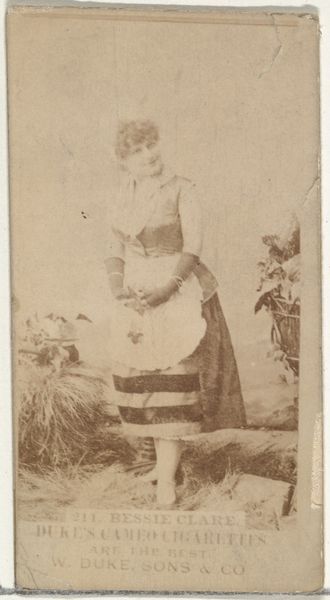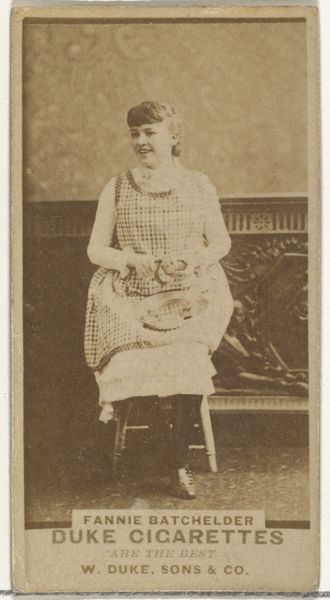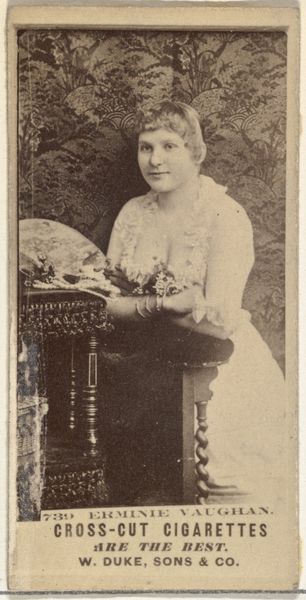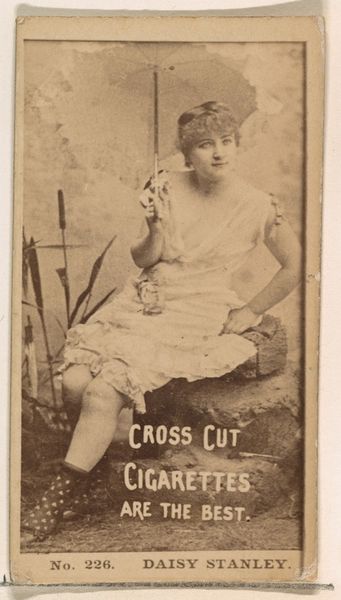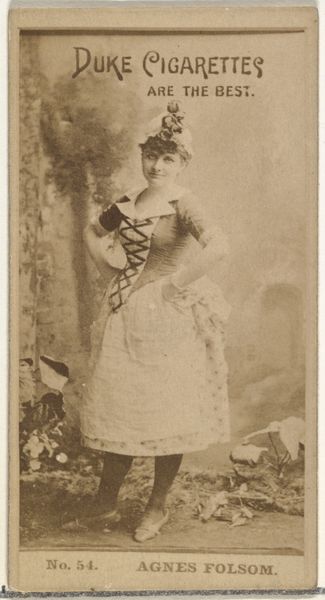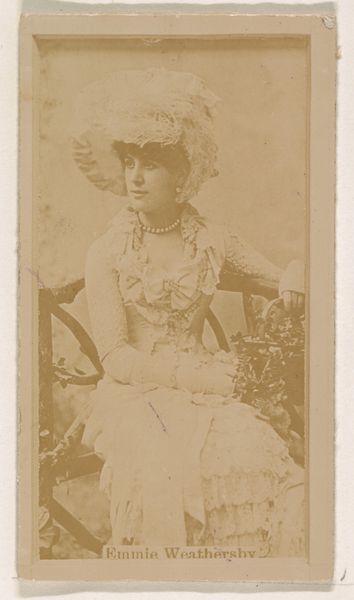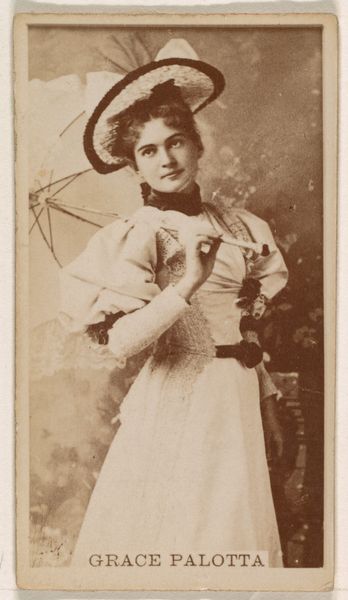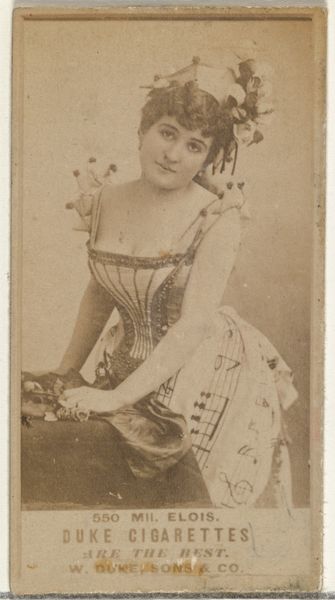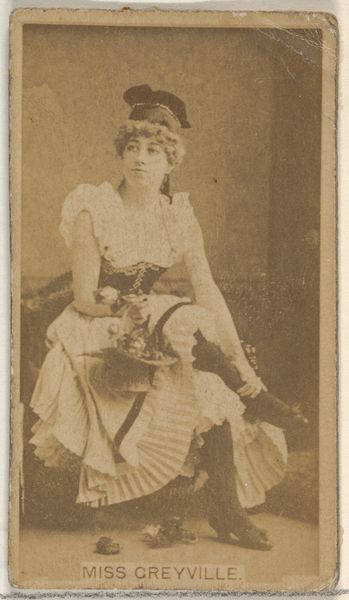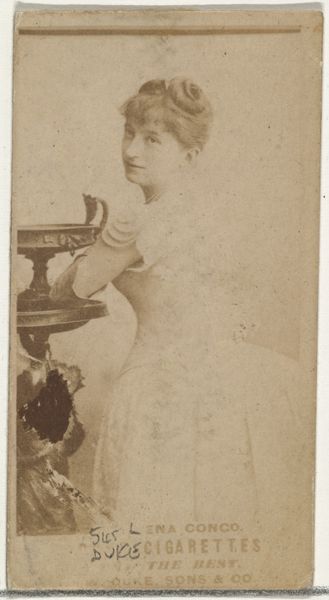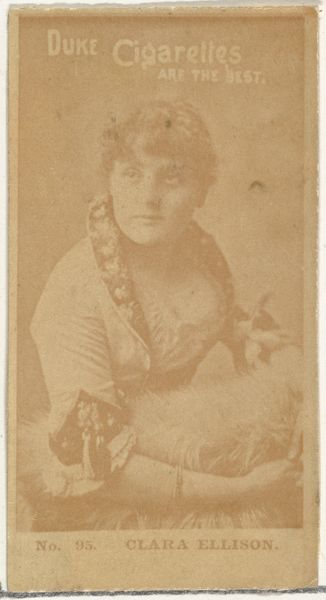
Card Number 12, Duprie, from the Actors and Actresses series (N145-1) issued by Duke Sons & Co. to promote Cross Cut Cigarettes 1880s
0:00
0:00
drawing, print, photography, albumen-print
#
portrait
#
drawing
# print
#
photography
#
19th century
#
men
#
genre-painting
#
albumen-print
Dimensions: Sheet: 2 1/2 × 1 3/8 in. (6.4 × 3.5 cm)
Copyright: Public Domain
Curator: This albumen print, created in the 1880s by W. Duke, Sons & Co., is titled "Card Number 12, Duprie, from the Actors and Actresses series." These cards were issued as promotional items for Cross Cut Cigarettes. What strikes you about it? Editor: A certain softness permeates this image. It's as if the photographer aimed for a romantic, idealized portrayal of a female figure, not quite pinning her down with sharp details. It’s dreamy in a way, but there is also a melancholy lurking beneath its surface. Curator: Consider how tobacco companies deployed images to craft a specific cultural narrative. This isn't just a portrait; it's an aspirational lifestyle being sold along with the cigarettes. She almost has the air of a medieval maiden. Do you sense any familiar echoes or symbolism in her posture or attire? Editor: Absolutely. The lace and loose garments definitely evoke leisure and privilege, a stark contrast, I imagine, to the factory workers who might have been buying these cigarettes. It reminds me how deeply gendered advertising became and remained. Smoking became coded as this ruggedly masculine thing. The cigarette card image seems geared toward a female audience too. Curator: Precisely. The rose on her dress—the very image of idealized, feminine beauty—plays into that intended target. Roses in art frequently stand for love, beauty, and fleeting time, reminding us of the brief moment in life. This adds a symbolic depth beyond simple promotion. Editor: It is a calculated image that reinforces a particular social order while subtly manipulating consumers. I'm intrigued by the tension between promoting a product inherently harmful while portraying an image of almost ethereal, feminine gentleness. Curator: A paradox central to advertising, isn’t it? Selling desires and dreams through fleeting pleasures. The image-makers tap into archetypes and aspirations, sometimes at odds with the actual product. Editor: Thinking about her posture—seated, hands busy, almost contemplative— it feels loaded. She seems paused in a moment of domesticity. Curator: And perhaps this card functioned almost like a talisman. It offered its owner a window into a world of aspiration. We should not forget how these cards functioned as miniature artworks distributed widely among the public. Editor: Absolutely. Even these tiny pieces reflect enormous social narratives, prompting us to question the constructed images we often readily consume.
Comments
No comments
Be the first to comment and join the conversation on the ultimate creative platform.

